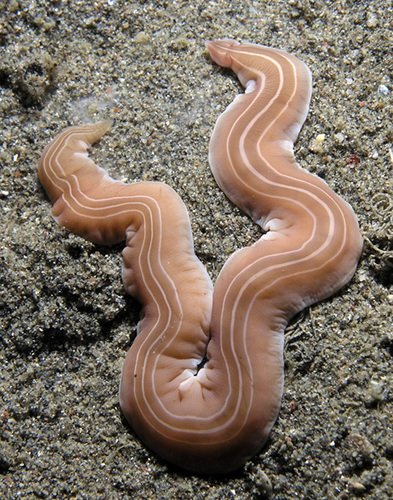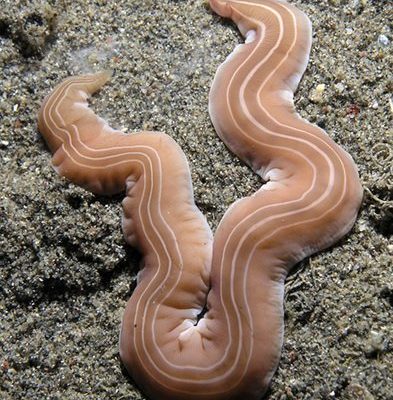
Ribbon worms, or *Nemertea*, are fascinating in both appearance and function. Imagine a squiggly piece of spaghetti that can stretch and contract at will. They come in various colors and sizes, some even reaching lengths of over a meter! Despite their somewhat bizarre looks, they are essential players in the intricate web of life in estuaries. So how exactly do these creatures contribute to biodiversity? Let’s dive into their importance.
What Are Ribbon Worms?
Ribbon worms are fascinating invertebrates, known for their long, slender bodies and unique way of moving. They possess a type of **proboscis** that can shoot out to catch prey, an impressive adaptation for survival. You might picture them as the ninja of the marine world, stealthily hunting small creatures like worms, crustaceans, and even tiny fish.
They primarily inhabit the soft, muddy bottoms of estuaries, where they find a wealth of food. This habitat is crucial because estuaries act as nurseries for many marine species. Ribbon worms thrive in these environments due to their ability to burrow and navigate through sediment, making them well-suited for life in shifting landscapes.
Often, they stay hidden, making them less known than other marine dwellers. However, this doesn’t undermine their importance. In fact, their secretive lifestyle allows them to play various roles—from predator to prey—within the food web.
The Role of Ribbon Worms in the Food Web
Ribbon worms are not just passive inhabitants of estuaries; they actively contribute to the ecosystem’s food web. As predators, they help control populations of smaller organisms, including other invertebrates and larvae. By keeping these populations in check, they ensure that no single species becomes too dominant, which is crucial for maintaining balance.
At the same time, ribbon worms can be a food source for larger predators. Species such as fish and birds often feast on them, creating a link between the smaller invertebrates and larger marine life. Here’s where it gets interesting: the presence of ribbon worms can attract various predators, which increases biodiversity in the area.
Think of ribbon worms as the middlemen in an essential transaction of energy flow. They absorb energy from the tiny organisms they consume and pass it up the food chain, supporting a diverse range of species. Without them, the entire structure of the food web might falter, leading to a less diverse and less resilient ecosystem.
Impact on Sediment Composition
Ribbon worms also play a vital role in shaping their environment. As they burrow through the sediment, they help aerate it, allowing water and nutrients to circulate more freely. This aeration is essential for the health of other organisms that live in the sediment, like clams and other bivalves. You could think of ribbon worms as nature’s little gardeners—working tirelessly to make sure the soil is rich and healthy.
Additionally, their feeding habits help break down organic matter, contributing to nutrient cycling. When ribbon worms consume detritus (the organic material found in sediments), they help decompose it and return essential nutrients back into the ecosystem. This process supports plant growth, which in turn benefits other organisms that rely on those plants for food and habitat.
In this way, ribbon worms hold a critical ecological function. Their role in sediment composition isn’t just about their immediate surroundings; it has a ripple effect that influences the entire estuarine ecosystem.
Indicators of Ecosystem Health
Ribbon worms can serve as indicators of environmental health. The presence or absence of certain species can tell researchers a lot about the quality of the estuarine habitat. For example, if the population of ribbon worms declines, it could signal problems in the ecosystem, such as habitat destruction or pollution.
Monitoring these creatures helps scientists track changes in the environment over time. This data is crucial for understanding how estuarine ecosystems respond to changes—like climate change, urban development, or oil spills. By studying ribbon worms and their interactions, researchers can make informed decisions on conservation efforts.
So, when we talk about biodiversity, we’re not just discussing the number of different species. We’re also looking at the connections between them and how they respond to environmental shifts. Ribbon worms, in their quiet way, provide us with important clues about the world beneath the surface.
The Importance of Biodiversity in Estuaries
Biodiversity is vital for a healthy ecosystem, and estuaries are hotspots of this diversity. They provide habitats for a variety of species, from fish and birds to plants and microorganisms. The intricate relationships formed between these species create a resilient ecosystem that can better withstand changes in the environment.
Estuaries also serve as crucial nurseries for many marine species, supporting both commercial and recreational fisheries. The more diverse an ecosystem, the more resilient it is to disturbances, whether natural or human-induced. By understanding how ribbon worms contribute to this biodiversity, we can appreciate the complexity of these environments even more.
Moreover, a healthy estuarine ecosystem provides us with numerous benefits. From filtering pollutants to protecting shorelines from erosion, the ecosystem services offered by estuaries are invaluable. This is why preserving the biodiversity of these areas is essential—not just for the species that live there, but for us as well.
Conservation Considerations
Protecting ribbon worms and their habitats is key to maintaining biodiversity in estuaries. Human activities, such as pollution and habitat destruction, pose significant threats. For example, the use of fertilizers and runoff from urban areas can lead to nutrient overload, disrupting the ecosystem balance.
Conservation efforts must focus on reducing pollution, restoring habitats, and promoting sustainable practices. Community awareness is also essential. By educating people about the importance of all species, including ribbon worms, we can inspire actions to protect these ecosystems.
Additionally, supporting local conservation organizations that work to monitor and restore estuarine habitats can make a big difference. Every little effort contributes to the larger goal of preserving biodiversity.
Here’s the thing: when we protect ribbon worms, we’re not just saving a single species. We’re safeguarding an entire ecosystem, which ultimately benefits us all.
Wrapping It Up
Ribbon worms may not be the most glamorous creatures in the estuarine world, but their contribution to biodiversity is vital. Through their roles as predators, habitat engineers, and indicators of ecosystem health, they support many other species and the overall health of these unique environments.
As we navigate the challenges of environmental change, understanding and protecting these fascinating invertebrates becomes increasingly important. By fostering awareness and taking steps to conserve estuarine habitats, we can help maintain the vibrant biodiversity that ribbon worms and other species depend on.
So next time you visit an estuary, take a moment to appreciate the hidden gems beneath the surface. Ribbon worms are waiting to be recognized—not just as fascinating creatures, but as essential players in the grand tapestry of life.

